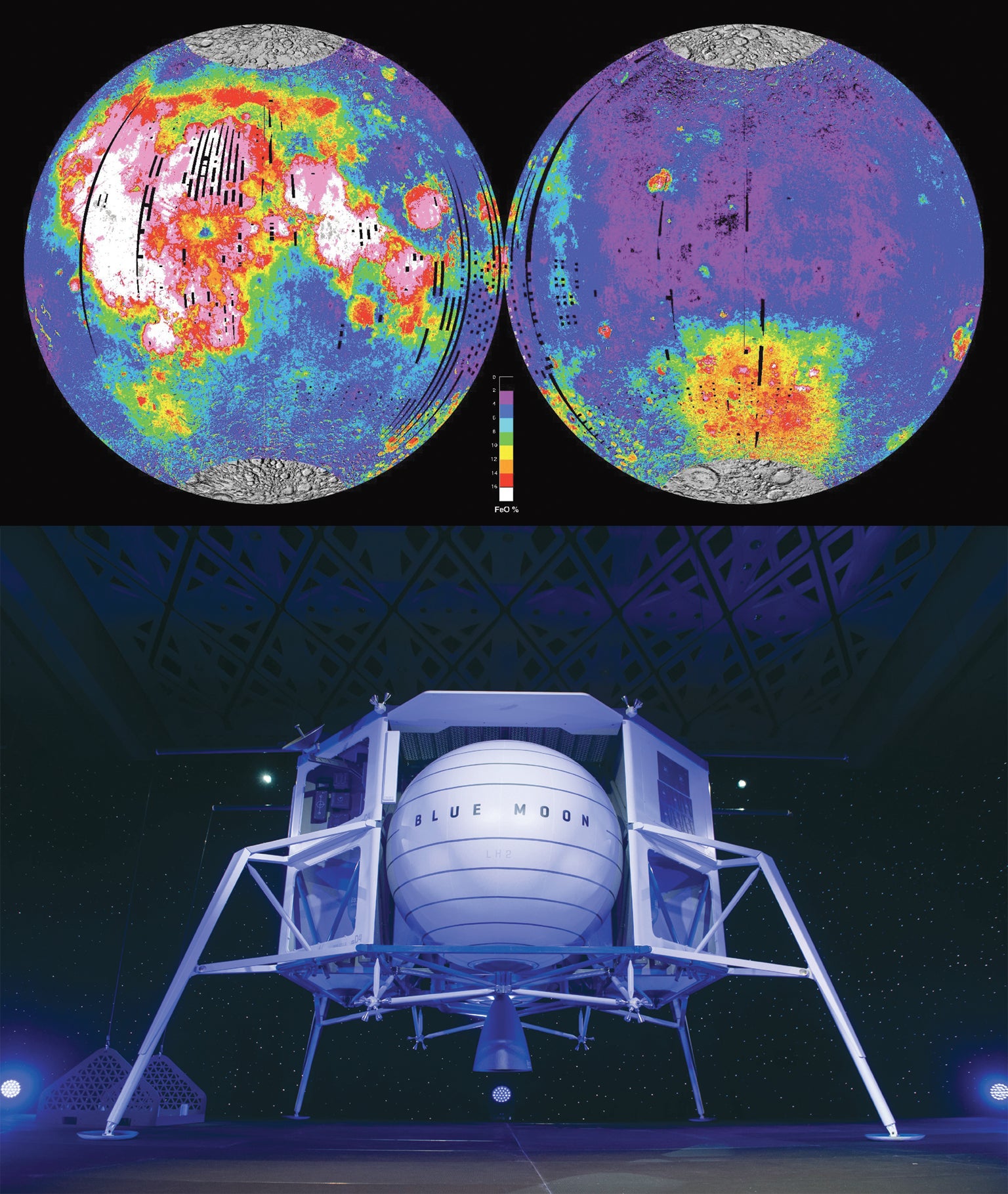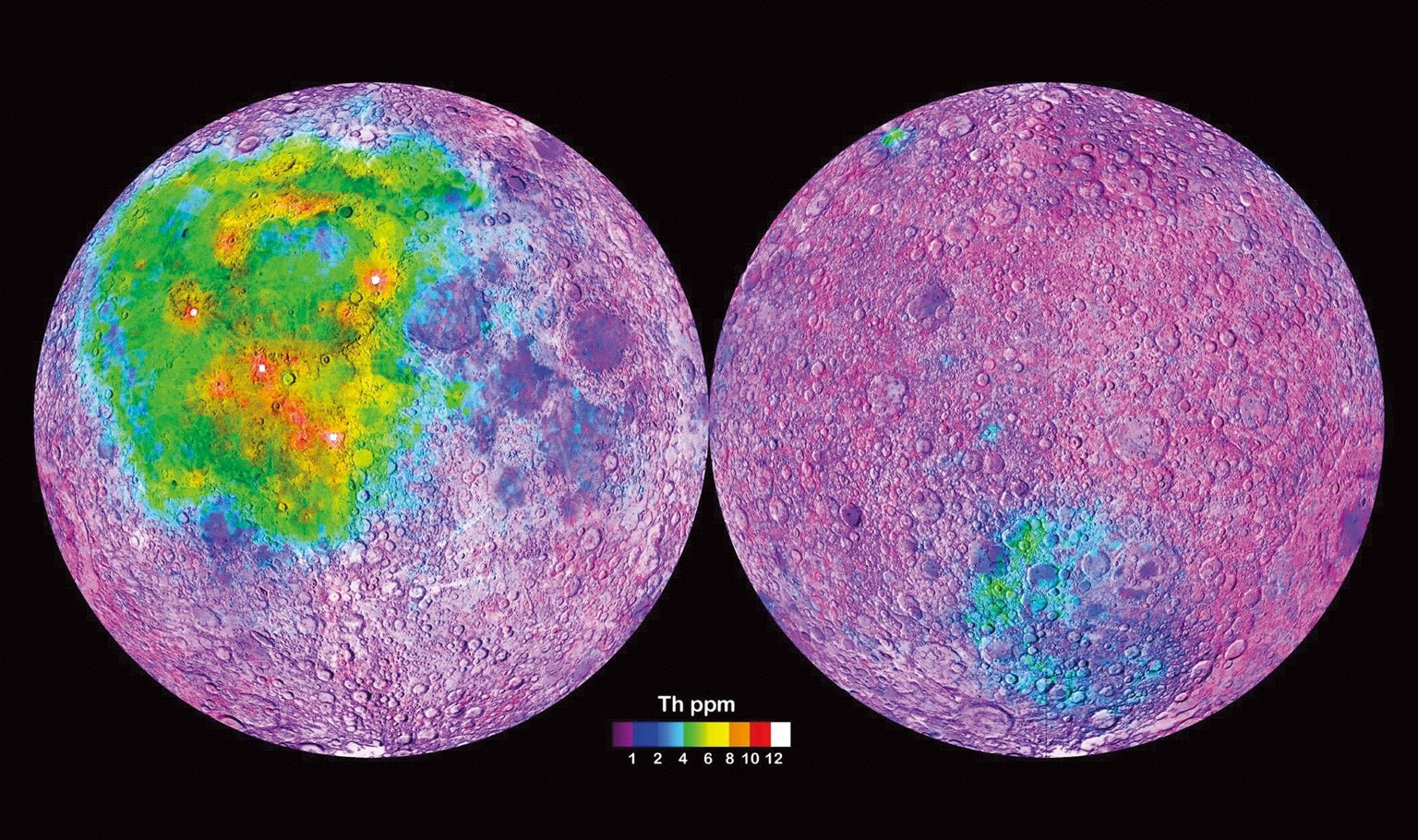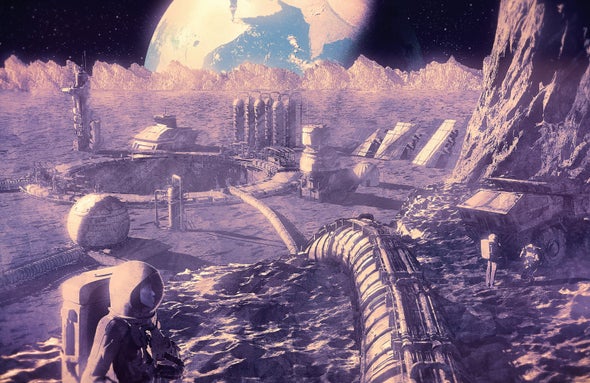A grainy black-and-white image plays across the screen in one of Bob Richards’s earliest memories—spacesuits, a lander and astronauts Neil Armstrong and Buzz Aldrin taking their historic first steps across the lunar surface. Richards, who was barely out of his toddler years at the time, recalls sitting in his family living room north of Toronto while his dad futzed with the rabbit-ear antenna, trying to improve the broadcast streaming over from Buffalo, N.Y. “Apollo 11 was a defining moment for humanity,” says the founder and CEO of Moon Express, a company that hopes to sell transportation to our natural satellite and eventually mine materials there. “The inspiration of Apollo is very prominent in what’s happening today in space.”
Back in the 1960s, it seemed like just a matter of time before humanity would slip the bonds of Earth and begin a slow crawl out into the universe. Although it has taken longer than many expected, something like that moment may soon arrive. Around half a dozen governments, as well as a handful of private companies, all have moon missions planned for the near future—a situation ripe for conflict.
The Outer Space Treaty, which the U.S., the U.K. and the Soviet Union signed less than two years before Apollo 11 (and which now has 107 countries party to it), stipulates that space exploration must be conducted peacefully and for the benefit of all nations. It also holds that no one can claim territory on a celestial body. But lower down in the treaty is a loophole: two “noninterference clauses,” which require all signatories to avoid causing harm to another’s probes or outposts—for instance, by landing near or on top of them. This sounds reasonable enough, but it also creates an opening for a nation or private entity to monopolize a desirable spot simply by arriving there first.
Should one nation or entity try to stake a claim, it “might trigger a ‘scramble for the Moon’ comparable in some respects to the ‘scramble for Africa’ which began with the identification of mineral resources in the Congo in the 1880s,” wrote astrophysicist Martin Elvis of the Center for Astrophysics at Harvard University and the Smithsonian Institution and his co-authors in a 2016 paper in the journal Space Policy.

Sure enough, several missions scheduled to take place in the next few years all target the same territory. India’s Chandrayaan-2 mission, due to launch in July, will aim for the lunar poles. The China National Space Administration has said that at least its next three probes will head to the poles as well. The Russian space agency Roscosmos is developing its Luna-Glob program, which would touch down near the Boguslawsky crater near the south pole perhaps as early as 2021. That same year Japan intends to launch the Smart Lander for Investigating Moon, or SLIM, which could demonstrate extremely high landing accuracy on small lunar features. NASA, the European Space Agency and more private interests are looking moonward as well. In May, Amazon CEO Jeff Bezos, who founded the spaceflight company Blue Origin, unveiled plans for its Blue Moon lunar lander, which, he said, could be ready to carry crews within the next five years.
Moon Express aims to land at the lunar south pole in 2021. And if its spacecraft arrives before anyone else, Richards says, the company wants it to count for something. “One of our drivers is to get there first,” he says. “And we expect our rights of noninterference will be respected.”
The oil of space
There is plenty of real estate on the moon to go around—the total surface area is about the size of Africa—but the resources there are unevenly distributed. Iron and titanium, which could be useful for building moon habitats and technologies, are abundant in different regions of the lunar surface. The helium 3 deposits common in areas of the top layer of lunar regolith could power fusion reactors. And “resources” are not limited to extractable materials. Some landforms, such as certain crater pits, could offer radiation protection to astronauts, and sites on the lunar far side that are shielded from Earth’s radio noise would be especially well suited to hosting telescopes.
In the near term, the most desirable resource of all is water. Astronauts can drink water, or they can break it into its constituent elements and transform them into rocket fuel. For the first off-planet explorers, water has been called the oil of space.
Some of the most promising sites for water extraction are the so-called Peaks of Eternal Light at the north and south lunar poles. These are crater peaks, geographical features that often form at or near the edges of impact craters when an asteroid strikes the surface and pushes material to the side, where it rises up to form a ridge at the rim. Because of the moon’s orbital mechanics, the sun shines almost perpetually at these peaks, offering a nearly constant source of energy to solar panels. Astronauts could stage bases here to extract the water sitting conveniently nearby at the bottom of these craters, where permanently shadowed regions have allowed ice to accumulate.
Each pole contains roughly half a dozen of these Peaks of Eternal Light, which are roughly a few hundred meters across apiece. Given this relative scarcity, it is easy to see why the principle of noninterference could be a useful way for nations to claim territory. “They’re so small no one else can land on one without risking damage to a spacecraft that’s already there,” says Ian Crawford, a planetary scientist at Birkbeck, University of London, who has studied lunar resources. “The first companies or nations that land on these peaks, regardless of the legal niceties, will de facto have ownership.”

Legal loopholes
The Outer Space Treaty was written half a century ago, mainly by two countries—the U.S. and U.S.S.R.—that at the time were the only ones that could even dream of reaching the moon. Legal scholars have debated the treaty’s implications ever since, and recent developments, such as the rise of commercial spaceflight, have raised issues that were not on anyone’s radar back then.
In 2015 Congress sparked an international disagreement by passing the U.S. Commercial Space Launch Competitiveness Act, which specified that although no one can claim property on a celestial body, any material extracted from one is legally owned by the entity that did the mining and can therefore be sold for profit. Representatives from Russia, Brazil and elsewhere subsequently made an uproar at a March 2017 meeting of the United Nations Committee on the Peaceful Uses of Outer Space (COPUOS), stating that off-world mining was a type of de facto appropriation and that a global consortium was needed to regulate extraction operations.
Other countries have sided with the U.S.—including nations such as Luxembourg, which would like to be a major player in space-based resources—in its more laissez-faire interpretation of the law. Chinese delegates at COPUOS have mostly threaded the needle between the two sides, appearing to wait and see which reading will eventually prevail. “International law is made by the states collectively,” says Frans von der Dunk, a law professor specializing in space at the University of Nebraska–Lincoln. “If one says this is legal and another says this requires an international regime and licensing, then you have a big problem on your hands.”
As things stand today, highly desirable areas of the moon are likely to be acquired on a first-come-first-served basis, rewarding the wealthy countries and companies that can get there soon. Less affluent nations could store up animosity toward those that stake claims, stoking tensions much like in the situation now in the South China Sea, Crawford says. At the moment there is no way to ensure that scientifically interesting regions remain pristine. We should confront these conundrums before exploitation begins in earnest, says Tony Milligan, an ethicist at King’s College London and Elvis’s co-author. “Once you have a regular presence on the moon, the law begins to look very different, and the colossal loopholes that you can drive spaceships through suddenly stand out in much sharper relief,” he observes.
To many, the Chinese space program, with its political will and technological capabilities, appears to have a leg up on the competition. Chinese engineers have suggested that they can place a craft on the surface of the moon with centimeter-scale accuracy. Their upcoming set of Chang’e lunar missions intends to bring back samples and survey the poles in high detail. It might be in the best interests of other countries to begin working on rules that could rein in potential rivals, even if it means giving up some autonomy, von der Dunk says.
Some groups are already trying. A few years ago Tanja Masson-Zwaan, a space law expert at Leiden University in the Netherlands, co-founded the Hague International Space Resources Governance Working Group, an organization that has brought together government, industry and academia, among others, to come up with recommendations for off-world mining. In 2017 the group produced the building blocks for a legal framework of principles that aim to balance the interests of various stakeholders in accordance with international law. Masson-Zwaan recommends establishing something akin to the International Telecommunication Union, an agency at the U.N. that allocates satellite orbits and slices of the radio spectrum among nations for moon mining.
Risks and rewards
Although plans are afoot to grab lunar real estate, extracting resources such as rare elements and shipping them back to Earth is a long-term goal. Some would even say it is a fantasy. Given the incredible cost and technological hurdles involved in simply getting to space, let alone landing on the lunar surface, it is hard to imagine that transporting materials back to Earth would be profitable any time soon. Deep Space Industries and Planetary Resources, two private businesses that were set up in the early part of the 21st century to pursue asteroid mining, both failed to attract enough investment to attempt any deep-space resource extraction; they were eventually acquired by a satellite manufacturer and a cryptocurrency company, respectively. “It’s different than the gold rush days, when anybody with a mule or a pickax could go and try to find gold,” says George Sowers, a space resources expert at the Colorado School of Mines.
Still, if economic activities in space take off, mining could follow, experts say. Elvis points to private rocket companies, such as Elon Musk’s SpaceX, that are driving down the cost of launching vehicles into orbit. The cheaper and easier it is to get to space, the more common missions will become. Demand for fuel and other resources could follow, and launching materials from the relatively low gravity of the moon would be more cost-effective than from the deep gravitational well of our own planet.
Richards is eager to play his part in bringing the moon within Earth’s economic sphere. Yet so far even he has struggled to get above the atmosphere. When Richards co-founded Moon Express in 2010, the company was one of 16 teams competing for the Google Lunar XPRIZE, which challenged a privately funded robotic spacecraft to land on the moon, drive around, and send back pictures and data. The original 2012 deadline was extended several times, ultimately to March 2018, but in January of that year the XPRIZE Foundation admitted that no one would be able to claim the $30-million purse.
Moon Express now plans to send its first vehicle into lunar orbit in 2020. It remains to be seen, however, whether its business model—offering space agencies and private companies payload rides to the moon—will be viable in the long run. When asked if he sees any conflict between his desire to stake a claim and the need for an equitable solution for everyone, Richards turns philosophical. The tensions in the Outer Space Treaty reflect the tensions between the belief systems of the two countries that wrote it, he says. The Communist Soviets saw the world from a collective perspective in which goods should be equally distributed, whereas the capitalist Americans believed in greater personal freedom and an unfettered private sector. “That’s why the treaty is open to interpretation,” he says. “I think we have a chance as a species to conquer these new frontiers without having to conquer each other.”


